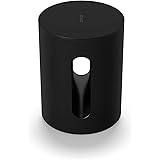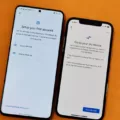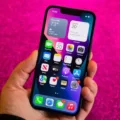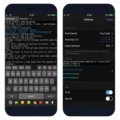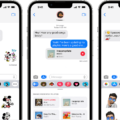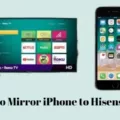Widgets are a great way to personalize your smartphone and make it more efficient. They allow you to access important information or perform specific tasks directly from your home screen. However, sometimes you may encounter the frustrating issue of widgets not showing up on your device.
There can be several reasons why widgets are not appearing on your home screen. In this article, we will explore some troubleshooting steps to help you resolve this issue.
1. Update or reinstall the app: If you have recently updated or installed a new app that comes with a widget, make sure to open the app at least once. This is because even after updating or installing the app, the widget may not show up until the app is launched. So, give it a try and see if the widget appears.
2. Restart your device: Sometimes, a simple restart can fix many software-related issues. Restarting your device refreshes the background services and forces apps and widgets on your home screen to load properly. To restart your device, hold down the physical power button and select Restart.
3. Check widget availability: Not all apps have widgets available. Make sure to verify if the app you are using actually offers a widget feature. You can do this by going to the app store and checking the app’s description or contacting the app developer for more information.
4. Add the widget manually: If the widget is not automatically appearing on your home screen, you can try adding it manually. On most smartphones, you can do this by touching and holding an empty space on your home screen, then selecting the “Widgets” option. From there, you can browse through the available widgets and select the one you want to add. Simply touch and hold the widget, then slide it to the desired location on your home screen.
5. Clear cache and data: Clearing the cache and data of the widget app can sometimes resolve issues with widget display. To do this, go to your device’s Settings, then navigate to the Apps or Applications section. Find the widget app in the list, tap on it, and then select the options to clear cache and data. Note that clearing data may delete any saved settings or preferences within the app, so proceed with caution.
6. Check for software updates: Keeping your device’s software up to date is crucial for optimal performance. Check if there are any pending software updates for your device and install them if available. Sometimes, widget issues can be resolved by updating the operating system.
If none of the above steps resolve the issue, it may be worth contacting the app developer or your device manufacturer’s support for further assistance. They may have specific troubleshooting steps or updates to fix the problem.
Widgets not showing up on your device can be frustrating, but there are several steps you can take to troubleshoot and resolve the issue. By updating or reinstalling the app, restarting your device, manually adding the widget, clearing cache and data, and checking for software updates, you can increase the chances of getting your widgets to appear on your home screen.
Why is Your Widget App Not Showing Up?
There could be a few reasons why your widget app is not showing up on your Home screen. Here are some possible explanations:
1. App not updated: Ensure that you have the latest version of the app installed on your device. Sometimes, updates can introduce new features or fix bugs that might be causing the widget to not appear. Follow the steps outlined in our guide on downloading and updating apps to make sure you have the most recent version.
2. App not launched: Even if you have updated the app, it may still not show up as a widget until you have launched it at least once. Try opening the app and navigating through its interface to trigger the widget to become available.
3. Widget not properly configured: Some apps allow you to customize the widget’s appearance and functionality. Check if there are any settings or options within the app that pertain to the widget. Make sure you have configured it correctly and enabled it to be displayed on your Home screen.
4. Widget not supported: Widgets are not supported on all devices or operating systems. Verify if your device and operating system version are compatible with the widget you are trying to use. You can usually find this information in the app’s description or on the developer’s website.
5. Widget not added to Home screen: Adding a widget to your Home screen is a separate step from installing the app itself. Make sure you have followed the process to add a widget correctly. Depending on your device, this may involve long-pressing on the Home screen, selecting the widget option, and choosing the desired widget from the available list.
6. Widget not visible due to screen layout: If your Home screen is crowded with icons or other widgets, the widget you want to add may not be visible initially. Try rearranging or resizing existing widgets or removing unnecessary icons to make space for the new widget.
By considering these possible reasons and taking appropriate actions, you should be able to troubleshoot why your widget app is not showing up on your Home screen.

Why is Your Widget Not Appearing On Your Home Screen?
There could be several reasons why a widget is not appearing on your home screen. Here are some possible explanations:
1. Widget not installed: Ensure that you have actually installed the widget on your device. Go to your app drawer or widget list and check if the widget is available for selection. If not, you may need to download it from the app store.
2. Widget not compatible: Confirm that the widget is compatible with your device and operating system. Some widgets may only be compatible with specific versions of Android or iOS.
3. Widget not enabled: Check if the widget is enabled in your device settings. Go to the widget section in your device settings and make sure the widget is toggled on.
4. Widget not added to home screen: If the widget is installed and enabled, ensure that you have actually added it to your home screen. Long-press on an empty area of your home screen, select “Widgets” from the options, and locate the widget you want to add. Drag and drop it onto your home screen.
5. Widget hidden in app drawer: It’s possible that the widget is hidden in your app drawer. Open your app drawer, look for a section or tab labeled “Widgets,” and check if the widget is located there. If so, long-press on it and drag it to your home screen.
6. Home screen layout issue: Occasionally, there may be a glitch with your home screen layout, preventing widgets from appearing. Try changing your home screen layout to see if it resolves the issue. Alternatively, you can try using a different launcher app to see if the widget appears correctly.
7. Device restart needed: Sometimes, a simple device restart can help resolve issues with widgets not appearing. Hold down the power button of your device and select the restart option. After the restart, check if the widget appears on your home screen.
If none of these solutions work, it’s possible that the widget itself has a bug or compatibility issue. In such cases, you may need to contact the widget’s developer for further assistance or look for alternative widgets with similar functionality.
Why Can’t You See Your Widgets On Your iPhone?
There could be several reasons why you might not be able to see widgets on your iPhone. Here are some possible explanations:
1. Incorrect swipe: Widgets are accessed by swiping right from the left edge of the Home Screen or the Lock Screen. Make sure you are swiping in the correct direction and from the correct location.
2. Disabled widgets: It’s possible that widgets have been disabled on your device. To check this, go to your Home Screen, swipe right to access the widget screen, scroll to the bottom, and tap on “Edit.” Here, you can see a list of available widgets. If you see any widgets with a red minus sign (-), it means they are disabled. Tap the green plus sign (+) next to the disabled widgets to enable them.
3. Widget settings: Some widgets require specific settings to be enabled in order to appear on the widget screen. For example, weather widgets may need location services to be enabled. To check widget settings, go to Settings > Privacy > Location Services and ensure that the necessary settings are enabled for the widgets you want to use.
4. Widget not installed: Certain widgets may require you to have the relevant app installed on your iPhone. If you don’t have the app installed, you won’t be able to see its widget. Check the App Store for any apps that you might need to install to use specific widgets.
5. Software update: Widgets were introduced in iOS 14, so if your iPhone is running an older version of iOS, you won’t have access to widgets. Make sure your device is updated to the latest iOS version by going to Settings > General > Software Update.
6. Device compatibility: Not all iPhone models support widgets. Widgets are available on iPhone models running iOS 14 and later. If you have an older iPhone model, you may not be able to see widgets.
If none of these solutions resolve the issue, it’s recommended to contact Apple Support for further assistance tailored to your specific situation.
How Do You Make Your Widget Appear?
To make your widget appear on your home screen, follow these steps:
1. Start by finding an empty space on your home screen. This can be done by tapping and holding on any vacant area of the screen.
2. Once you do this, a menu will appear, showing various options. Look for the “Widgets” option and tap on it.
3. After tapping on “Widgets,” you will see a list of available widgets that you can add to your home screen. These widgets can vary depending on the apps you have installed on your device.
4. Scroll through the list of widgets and find the one you want to add. Touch and hold the widget you wish to place on your home screen.
5. As you hold the widget, you will notice that your home screens will be displayed as separate pages. Slide the widget to the desired home screen page where you want it to appear.
6. Once you have selected the appropriate home screen page, lift your finger to drop the widget onto that page. The widget will then be placed on your home screen.
7. You can resize the widget if needed. To do this, tap and hold the widget, and a border will appear around it. You can then drag the edges of the widget to adjust its size.
8. you can also move the widget to a different position on the home screen if desired. Just tap and hold the widget, then drag it to the desired location.
That’s it! By following these steps, you can make your widget appear on your home screen and customize its position and size to your preference.
Conclusion
If you’re experiencing the issue of a widget not showing up on your Home screen, there are a few steps you can take to resolve it. First, make sure that you have either updated or downloaded the app that the widget belongs to. Even if you have already done this, it’s important to launch the app at least once to ensure that the widget is properly loaded.
If you’ve completed these steps and the widget still doesn’t appear, try restarting your device. This can help refresh the background services and ensure that the widget is properly activated. To restart your device, simply hold down the physical power button and select Restart.
Once your device has restarted, swipe right from the left edge of the Home Screen or the Lock Screen to view your widgets. Scroll up and down to find the widget you’re looking for. If you’re unable to view widgets on the Lock Screen, make sure to check your device settings to ensure that widgets are enabled when the iPhone is locked.
To add a widget to your Home screen, touch and hold an empty space, then tap on “Widgets”. From there, touch and hold the widget you want to add and slide it to the desired location on your Home screen. Finally, lift your finger to place the widget in its new position.
By following these steps, you should be able to resolve the issue of a widget not showing up on your Home screen. Remember to ensure that the app is updated and launched, restart your device, and enable widgets on the Lock Screen if necessary.



